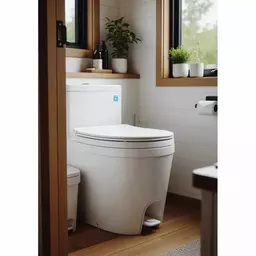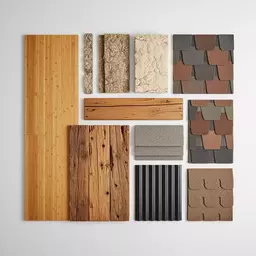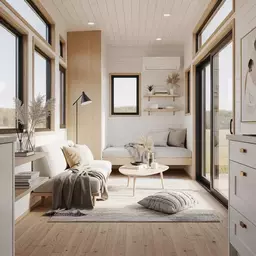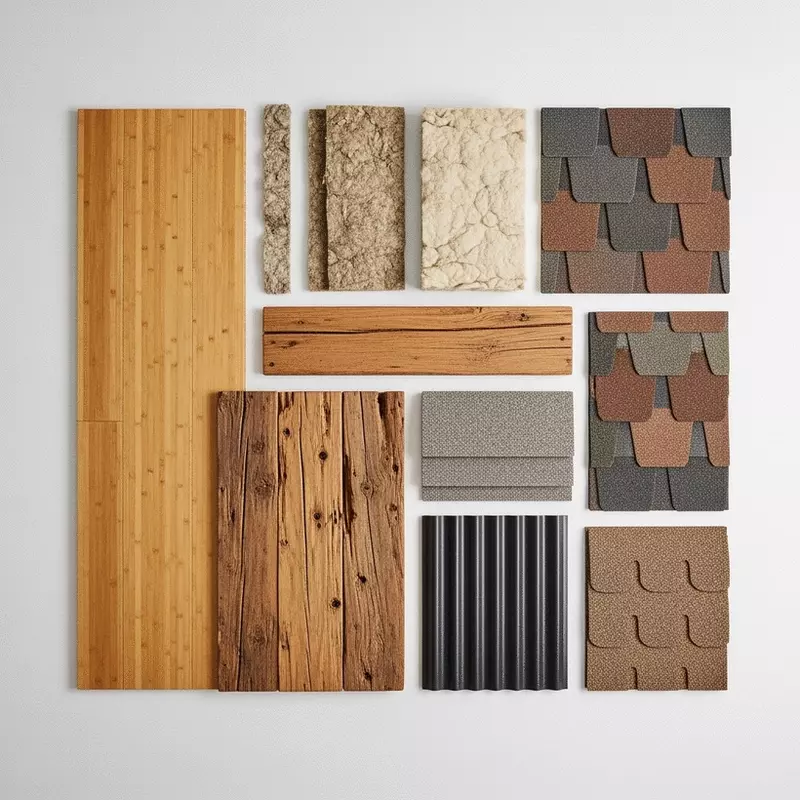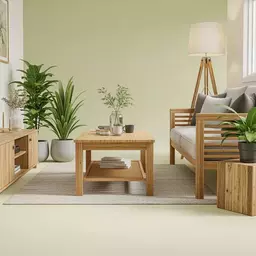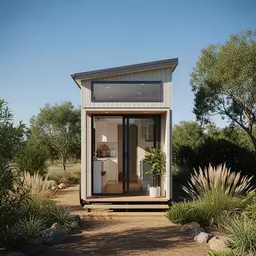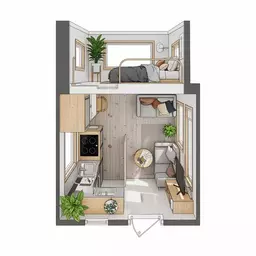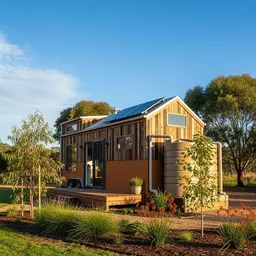Sustainable Materials for Tiny Homes
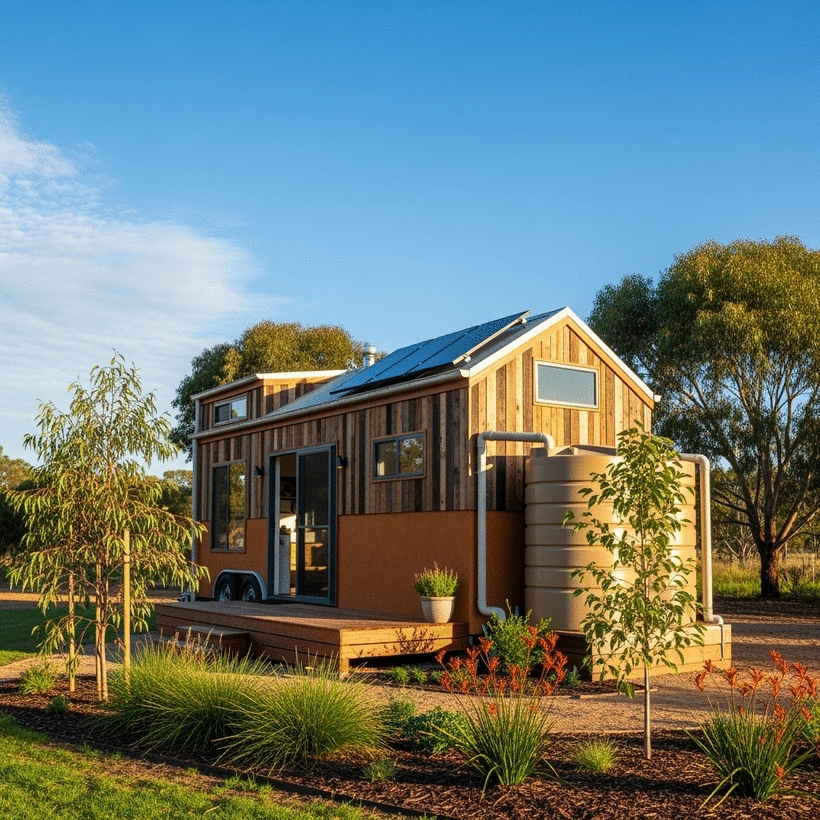
The tiny home movement is not just about downsizing; it reflects a profound shift towards sustainability. As you explore the world of tiny homes, consider how your choices in building materials can echo your commitment to the environment.
What You Will Learn
- Understanding the environmental benefits of sustainable building materials.
- Key eco-friendly materials suitable for tiny homes, like bamboo and reclaimed timber.
- The long-term advantages of choosing durable, low-maintenance materials.
- Insights from real-world tiny home builders who embraced sustainability.
- How adopting a minimalist lifestyle can enhance your living experience.
Key Sustainable Materials for Tiny Homes in Australia
Delve into the core benefits and long-term considerations of eco-friendly building materials for your tiny home journey. Discover more about eco-friendly materials for tiny homes and how they can transform your living space.
Why Choose Eco-Friendly Materials?
Healthier Homes: Low-VOC materials improve indoor air quality.
Reduced Impact: Renewable resources lower carbon footprint.
Energy Efficiency: Superior insulation reduces consumption.
Popular Materials & Benefits
Bamboo: Versatile, renewable, ideal for framing.
Reclaimed Timber: Character, reduces waste.
Hempcrete: Innovative, eco-friendly insulation.
Wool Insulation: Natural comfort, efficiency.
Recycled Metal/Plastic: Durability, resource minimization.
Rammed Earth/Straw Bale: Durable, highly insulated.
Long-Term Considerations & Care
Bamboo: Minimal maintenance, resistant to moisture/pests.
Reclaimed Timber: Occasional sealing, ages beautifully.
Hempcrete: Long lifespan, requires dry conditions.
Wool Insulation: Regulates moisture, lasts a lifetime (if dry).
Real-World Impact: Testimonials
"Bamboo flooring held up against humidity, adding warmth."
— Sarah, Queensland
"Reclaimed timber saved money and gave a charming rustic look."
— Tom & Alice, Tasmania
"Hempcrete insulation delivered great energy efficiency."
— Jack, New South Wales
Understanding Sustainable Building Materials for Tiny Homes in Australia
As we dive into the world of tiny homes, understanding the importance of sustainable building materials is crucial. These materials not only contribute to a healthier planet but also enhance the quality of life within our homes. Choosing eco-friendly options means opting for products that minimize environmental impact, such as low-VOC and natural materials that improve indoor air quality. By utilizing these materials, we can create living spaces that support our health and well-being while reducing our carbon footprint.
In Australia, where we are blessed with diverse climates and ecosystems, the choice of building materials can significantly influence our sustainability goals. It's not just about aesthetics; it's about making a conscious decision to preserve our beautiful environment. So, why not explore the benefits of these materials together?
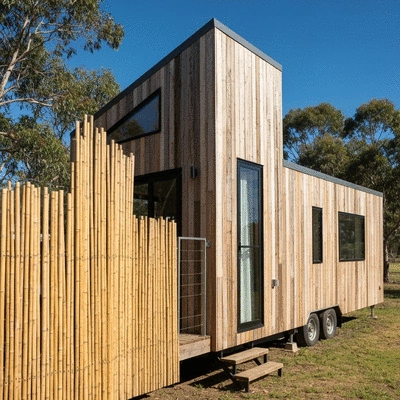
Why Choose Eco-Friendly Building Materials?
When considering any construction project, the choice of materials is paramount. Eco-friendly building materials offer a range of benefits, including:
- Reduced Environmental Impact: Materials sourced from renewable resources help lower our carbon footprint.
- Healthier Indoor Environment: Low-VOC and natural materials contribute to better air quality.
- Energy Efficiency: Many sustainable materials provide superior insulation, reducing energy consumption.
By prioritizing eco-friendly building materials, we not only enhance the beauty of our tiny homes but also invest in a sustainable future. Every choice matters, and as we strive to embrace minimalism through Luxe Tiny Homes, let’s celebrate the impact of these materials on our environment and health! For more insights into making informed choices, explore Australian tiny home building rules.
The Growing Popularity of Tiny Homes in Australia
The tiny home movement is gaining momentum across Australia, resonating with those who wish to simplify their lives and embrace eco-friendly living. As more Australians recognize the benefits of downsizing, the demand for sustainable materials has soared. Tiny homes are often designed with environmental consciousness at their core, making them a perfect fit for building with sustainable materials.
This trend isn't just about living in a smaller space; it’s about creating a lifestyle that aligns with our values. Sustainable materials play a vital role in this movement, allowing us to build homes that are not only compact but also reflect our commitment to the environment. Are you ready to join this revolution? Together, we can redefine what it means to live sustainably!
Key Sustainable Building Materials for Eco-Friendly Tiny Homes
Now that we've explored the significance of choosing sustainable materials, let’s take a closer look at some key options that are making waves in the tiny home community:
- Bamboo: A versatile, renewable resource ideal for framing and design.
- Reclaimed Timber: Adds character and reduces waste, combining aesthetics with sustainability.
- Recycled Metal: Offers strength and durability while minimizing new resource extraction.
- Hempcrete: An innovative insulation material that stands out for its eco-friendly properties.
- Wool Insulation: Provides natural comfort and efficiency with minimal environmental impact.
- Insulated Concrete Forms (ICFs): Enhance energy efficiency and sustainability in construction.
- Rammed Earth: A durable option with excellent thermal mass properties.
- Straw Bale: Highly insulated and eco-friendly, perfect for tiny home construction.
- Recycled Plastic: Utilized in various aspects of construction and furnishings.
Each of these materials brings unique advantages and contributes to the overall sustainability of tiny homes. By integrating them into our designs at Luxe Tiny Homes, we can create not only beautiful spaces but also homes that reflect our values of minimalism and eco-friendliness. Let’s keep exploring these innovative materials!
Pro Tip
When selecting sustainable building materials for your tiny home, consider the lifecycle of each material. For instance, materials like bamboo and reclaimed timber not only enhance aesthetics but also provide long-term durability with minimal maintenance. This ensures that your home remains both beautiful and functional for years to come, aligning with your commitment to sustainability.
Long-Term Considerations for Sustainable Building Materials
When it comes to choosing sustainable building materials for your tiny home, thinking beyond the initial construction phase is crucial. It's essential to examine the long-term performance and care requirements of these materials, especially given Australia’s diverse climates. Not only do eco-friendly materials contribute to a healthier planet, but they also offer durability and resilience, making them a solid investment in your future.
Maintaining your tiny home shouldn’t feel like a chore. With the right materials, upkeep can be straightforward and even enjoyable! Many sustainable materials, like bamboo and reclaimed timber, are naturally resilient, reducing the need for frequent repairs or replacements.
Maintenance and Lifecycle of Eco-Friendly Materials
- Bamboo: Requires minimal maintenance, is highly resistant to moisture and pests, and can last for decades with proper care.
- Reclaimed Timber: Needs occasional sealing or treatment to maintain its integrity but offers a unique character that ages beautifully.
- Hempcrete: Insulates well and has a long life span, but it's essential to ensure it stays dry to prevent mold.
- Wool Insulation: Naturally regulates moisture and can last a lifetime if kept dry and clean.
Understanding the lifecycle of these materials helps you make informed decisions that align with your sustainability goals. For instance, opting for materials that age gracefully not only enhances the aesthetic of your tiny home but also supports a minimalist lifestyle by reducing the need for replacements.

Real-World Case Studies and Insights
To bring this discussion to life, let’s dive into some real-world experiences from fellow tiny home builders across Australia. These builders have embraced sustainable materials, and their stories serve as a testament to the benefits they’ve experienced.
- Sarah from Queensland: After using bamboo flooring in her tiny home, Sarah loves how it's held up against humidity while adding a warm, inviting feel to her space.
- Tom and Alice in Tasmania: They opted for reclaimed timber for their walls and beams, which not only saved them money but also gave their home a charming rustic look.
- Jack in New South Wales: Jack chose hempcrete for its insulation properties and has been thrilled with the energy efficiency of his tiny home.
These testimonials highlight the transformative power of choosing the right sustainable materials. By learning from their experiences, you can feel more confident in your decisions as you embark on your own tiny home journey with Luxe Tiny Homes.
FAQs About Sustainable Building Materials for Tiny Homes
Q1: What are the primary environmental benefits of using sustainable materials in tiny homes?
A1: Sustainable materials offer several environmental benefits, including a reduced carbon footprint, improved indoor air quality due to low-VOC content, and enhanced energy efficiency through superior insulation properties. They also often utilize renewable resources and minimize waste.
Q2: What are some popular eco-friendly materials suitable for tiny homes in Australia?
A2: Popular eco-friendly materials include bamboo (versatile, renewable), reclaimed timber (reduces waste, adds character), hempcrete (innovative, eco-friendly insulation), wool insulation (natural comfort, efficiency), recycled metal/plastic (durability, resource minimization), rammed earth, and straw bale (durable, highly insulated).
Q3: How do eco-friendly materials contribute to a healthier indoor environment?
A3: Many sustainable materials are low in volatile organic compounds (VOCs) and other harmful chemicals commonly found in conventional building materials. This helps improve indoor air quality, reducing respiratory issues and promoting a healthier living space.
Q4: What are the long-term considerations for maintaining sustainable building materials?
A4: Long-term considerations include durability and maintenance. For example, bamboo requires minimal maintenance and is resistant to pests, reclaimed timber needs occasional sealing, and hempcrete and wool insulation require dry conditions to prevent mold. Choosing materials with a long lifespan reduces the need for frequent replacements, aligning with a minimalist lifestyle.
Q5: Can using sustainable materials help reduce energy consumption in a tiny home?
A5: Yes, many sustainable materials, such as hempcrete, wool insulation, and rammed earth, offer superior insulation properties. This helps to regulate indoor temperatures more effectively, reducing the need for heating and cooling and thereby lowering energy consumption.
Embracing a Sustainable Future with Tiny Homes
Making Informed Choices for Eco-Friendly Living
As you consider your options for a tiny home, I encourage you to reflect on the impact of sustainable building materials not only on your living space but also on the environment. By making informed choices, you contribute to a healthier planet and a more sustainable future.
Each material you choose plays a part in reducing your carbon footprint and promoting a minimalist lifestyle that resonates with the values we hold dear at Luxe Tiny Homes. Imagine living in a space that not only fulfills your needs but also aligns with your commitment to sustainability!
Call to Action: Start Your Tiny Home Journey Today
Are you ready to take the leap into eco-friendly living? I invite you to explore your options for building an eco-friendly tiny home right here in Australia. At Luxe Tiny Homes, we provide resources to help you find the best materials and builders to bring your vision to life. For design inspiration, check out these 2025 tiny home design ideas.
Let’s take this journey together toward a simpler, more sustainable lifestyle. Start your tiny home journey today and embrace the beauty of minimalist living!
Recap of Key Points
Here is a quick recap of the important points discussed in the article:
- Importance of Sustainable Materials: Choosing eco-friendly building materials enhances indoor air quality and reduces environmental impact.
- Benefits of Eco-Friendly Choices: Sustainable materials offer reduced carbon footprints, healthier living environments, and improved energy efficiency.
- Key Materials for Tiny Homes: Consider using bamboo, reclaimed timber, hempcrete, and other sustainable options for construction.
- Long-Term Sustainability: Evaluate the lifecycle of materials to ensure durability and ease of maintenance over time.
- Community Insights: Real-world examples from tiny home builders highlight the advantages of utilizing sustainable materials.
